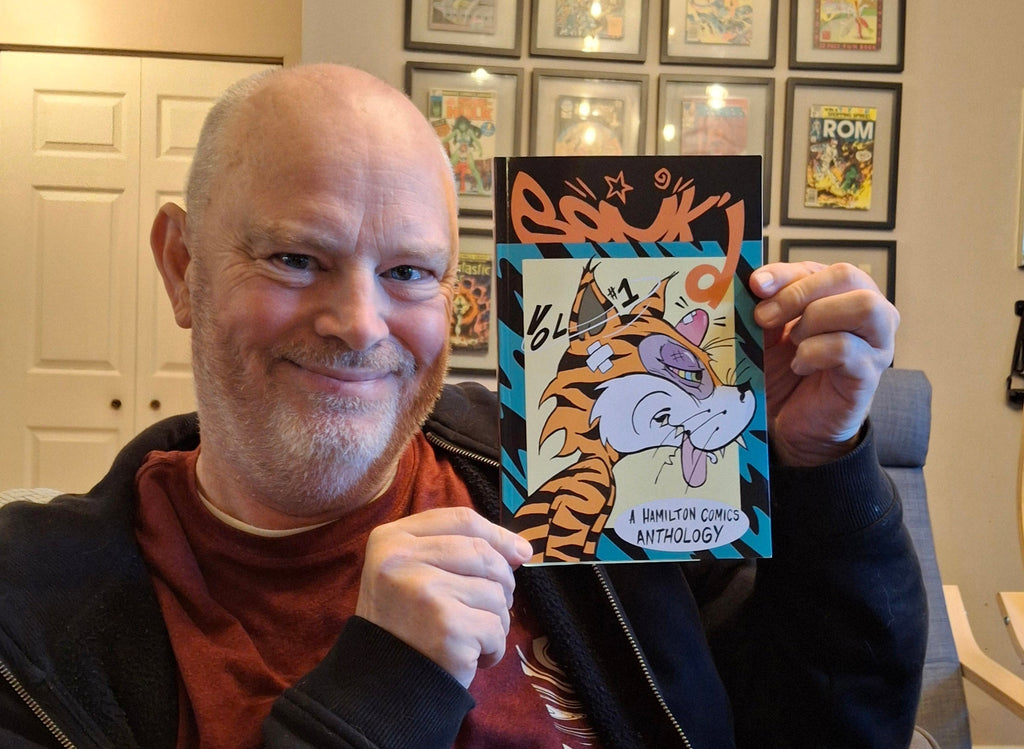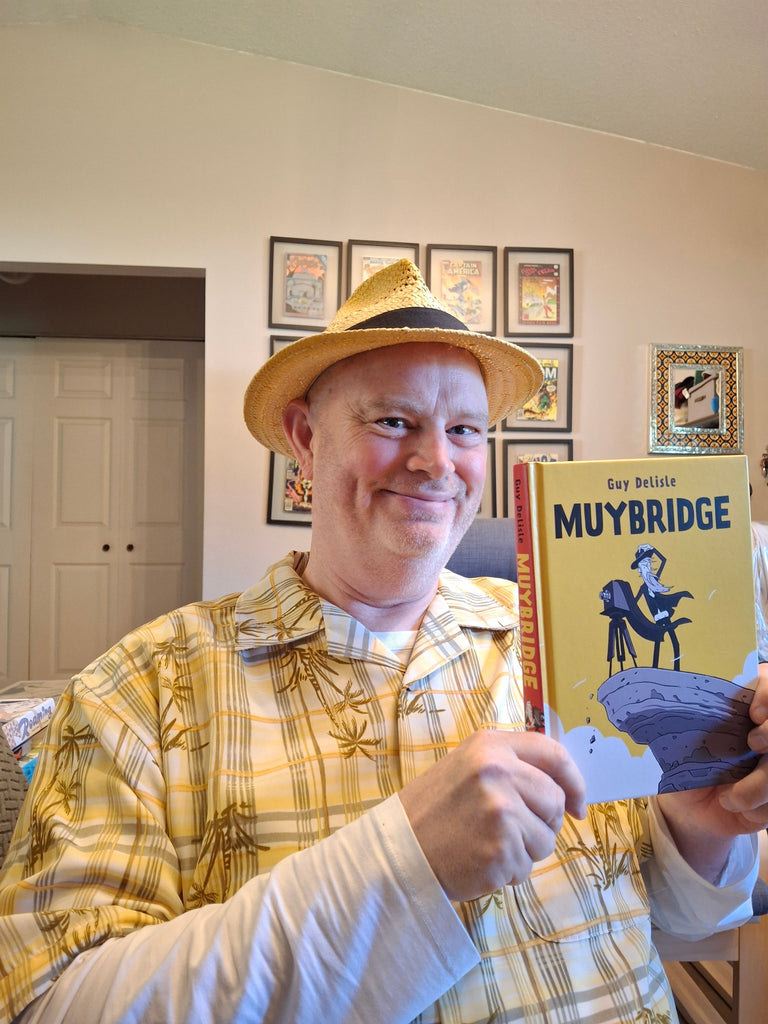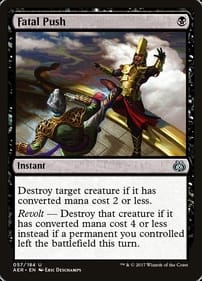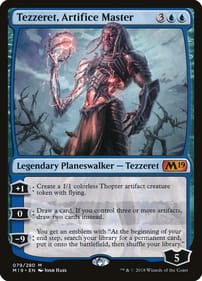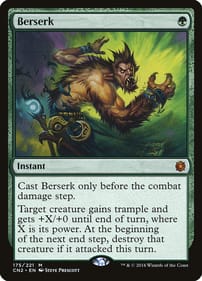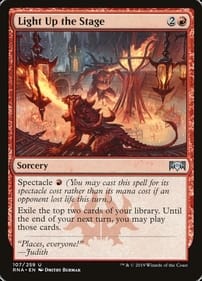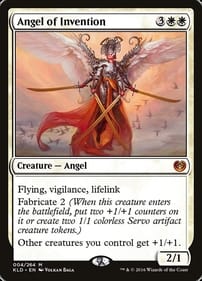Dawn of the Black Axe is Amazing
Dawn of the Black Axe is amazing By Dan Brown David Petersen’s Mouse Guard: Dawn of the Black Axe is a superlative series that will make for a must-read graphic novel come January. The three-issue title debuted and wrapped from March to June this year. The collected version lands on store shelves January 20. Do yourself a favour and pre-order your copy now. Although I initially felt trepidation that another comic creator – Gabriel Rodriguez – handled art duties, instead of Petersen, my skepticism soon melted away when I got a closer look at the individual issues, which are gorgeous. As Mouse Guard fans know, Petersen is the Michigan writer/artist who originated the idea of a medieval mouse society protected by the members of the Guard, forest rangers who serve to keep the far-flung mouse communities safe. Petersen’s art in the main title is amazing, which is what I’m used to. But Rodriguez’s lines are just as expressive, in their own way. There are fantasy/sorcery elements to the story – mostly in the form of a ghostly elk, who guides Bardick, the first-ever bearer of the black axe, in his quest to kill five giant snakes who are tightening their grip on mouse territory by raiding villages and breeding more young. The blade itself was fashioned by the blacksmith Farrer, whose own wife and children were slain by one of the serpents. “I’ll take all the pain forged in this weapon and protect mouse kind,” Bardick vows, perhaps not realizing he will be in the forest for many a season before he can rest. I was able to enjoy Rodriguez’s art on its own terms. He can do action just as well as he can render scenes in which the characters are static. He is also so good at evoking a sense of time – the reader sees Bardick grow weary as his adventures drag on over years. And that mysterious ghost elk is ethereal, except when he’s material, in one panel helping Bardick ford a stream. Each image rewards repeated attention, as the reader absorbs more detail and is drawn deeper into the Mouse Guard world. Nor is it a foregone conclusion that the slithering death threatening mouse communities will be vanquished. Bardick lives to see some of the mice thrive, but Petersen has a twist up his sleeve that will force readers to re-think what they thought they knew about the enemies of the mice, who have a “seething fury . . . boiling in their collective cold hearts.” What I know for sure about Mouse Guard is how Petersen is not interested in telling the same old stories. In a previous adventure, some mice rebelled against the mouse matriarch – but instead of taking the side of the rebels, a tale we’re all familiar with, he told it from the vantage of those trying to keep order. Another way of saying it is, Mouse Guard comics remind me of the spirit of the 2000 film Crouching Tiger, Hidden Dragon, as well as the Lord of the Rings books and the best Star Wars movies/TV shows. I’m already excited for 2026. Dan Brown has covered pop culture for more than 33 years as a journalist and also moderates L.A. Mood’s monthly graphic-novel group.
More Patented Tom Gauld Science Humour
By Dan Brown I’m a fan of Tom Gauld’s work, so I was already inclined to like his latest collection, Physics for Cats: Science Cartoons, which was published in October. It’s as strong as such previous books as his Department of Mind-Blowing Theories, Baking with Kafka, and Mooncop. The cartoons collected in his latest publication originally appeared in New Scientist magazine. They continue his tradition of absurdist humour and once again, he covers the gamut from slapstick comedy to highbrow references (H.P. Lovecraft has been a recurring source of laughs for many years). If the idea of a fun-sized Hadron Collider you can take to the beach strikes you as funny, then Gauld is the cartoonist for you. The closest comparison I can come up with is Gary Larson, who used to do The Far Side. Gauld has the same sort of cock-eyed way of looking at the world. The toons here feature a cast of cat scientists, human scientists, cockroach scientists, alien scientists, medieval scientists, and talking dogs. You don’t have to be a scientist to appreciate them, in fact a number of them revolve around petty office politics – apparently the science community is no different from any other made up of human beings. In fact, Gauld hints that the only thing separating modern scientists from old-school witches is their lab coats. Do real scientists actually take the extra bones from museum exhibits and create super-scary monster skeletons out of them? I don’t know, but Gauld’s men and women of science do. Or imagine a job interview at the Institute for Lifespan Extension Research. Of course the applicant is asked, “Where do you see yourself in 500 years?” There’s a fair bit of play with panels here as Gauld tries to stretch his usual platform of a single rectangular box. One panel in Physics for Cats can be read upside-down, another front to back. Yet another panel is phasing out of existence. And in one cartoon, the framing looks something like a traditional Sunday newspaper strip. In one three-part cartoon, a scientist looks at a floating black disc. “I stared into the abyss,” she begins. “The abyss stared back.” The punchline comes in the third panel: “One thing led to another, and now I meet the abyss for regular chats in the coffee shop near my lab.” Gauld has clearly mastered the cartoon form by now. I would still love to see him experiment more with long-form narratives, as he did with 2016’s Mooncop. That said, if you have an egghead on your Christmas list, or even just someone who’s really well-read, you could do a lot worse than Physics for Cats. Dan Brown has covered pop culture for more than 33 years as a journalist and also moderates L.A. Mood’s monthly graphic-novel group.
New Collection Features Hamilton’s Finest
By Dan Brown Bonk’d Vol. 1 is “your new favourite comics anthology,” according to the blurb on the back cover. It features work from 25 Hamilton-based and -connected cartoonists. The 114-page collection is the brainchild of Hammer comic creators Joe Ollmann, Sunny Singh and Paul Palacios. You may know Ollmann from his many superlative graphic novels, including Fictional Father and The Abominable Mr. Seabrook. In the book’s brief introductory strip, Ollmann explains how the idea behind Bonk’d is to give local creators a showcase where they can “work out shorter ideas.” He also admits such collections don’t have an illustrious history: “Maybe we’ll be like those 80s and 90s anthologies in terms of a one-issue print run.” But based on this volume, Bonk’d should have much more staying power. This is a strong group of stories without any obvious weak spots. There are contributions from old hands like Seth, whose four-panel cartoon haikus – taken from his sketchbook – are a highlight. Then there are names that might be less familiar to readers outside Steeltown, such as James Collier, whose strip Kitty Finds Employment comes closest to capturing the feel of the underground comix of the 1970s. Some of the artists involved tackle the question of Hamilton’s identity in a direct way. Matt MacInnes’s piece LRT Buyouts is a visual record of all the structures “designated to be, or already have been, demolished to build the light rail transportation (LRT) system.” “Hundreds of low-income and working-class people have been displaced in this process,” MacInnes notes. It’s such a simple idea, yet it makes for a powerful statement. That’s in contrast to Kento’s I Need/Like/Thank you HSR, a warm tribute to the city’s public transit. “The bus makes me feel like part of my community,” the single-name artist/writer muses. “Riding the bus feels like riding through the bloodstream of the city. I like being a cell.” MacInnes is also responsible for a two-page spread about the Hamilton Tigers, who have the distinction of being the only NHL team to ever go on strike, a move that cost them the Stanley Cup. Palacios publishes under the name Rulito. His The Stranger in the Bowtie is dedicated to profiling a local oddball, one of those figures that every city or town has who embody the spirit of that community in a gnarly way. (For London, think local legends like Roy McDonald or Bill Paul.) Palacios grapples with Steeltown’s civic identity in What is Hamilton Anyways?, the second panel of which features a hand giving the finger to the CN Tower: “It’s definitely NOT Toronto, despite being close to it.” His conclusion would do the folks in Austin, Texas proud. In Hamilton, he writes, “You can be as weird as you want. And we will love you for that.” Are readers demanding an anthology like Bonk’d? Will it have appeal outside the Hammer’s city limits? Let’s hope so. Whatever happens, Bonk’d Vol. 1 is clear evidence that Hamilton has the talent to turn this project into a going concern rather than just a one-off. Dan Brown has covered pop culture for more than 33 years as a journalist and also moderates L.A. Mood’s monthly graphic-novel group.
I’m the Odd Man Out as GNG Takes on Roaming
By Dan Brown SPOILER WARNING: This column contains details from the graphic novel Roaming, so if you value surprise stop reading right now! Here’s the rundown on the most recent meeting of the L.A. Mood Graphic-Novel Group, which was held Saturday, July 12. The book: Jillian and Mariko Tamaki’s Roaming, which follows three Canadian first-year university students on a five-day trip to New York City. The discussion: In short, I was in the minority as the only GNG member who really enjoyed the book. Odd man out, as usual! GNG has a custom of choosing a Canadian comic for our July meeting, so we honoured that tradition with this selection. (By sheer coincidence, it comes on the heels of two other books by Canadian creators in May and June.) I, along with one other member of the group, pitched Roaming back in January. While I love everything by the Tamakis, other members of the group strongly disliked Roaming, including someone who couldn’t even finish the thing. The thick volume centres on Dani, Fiona, and Zoe, three university students who take a trip to New York for a brief holiday from their studies. It’s very much a story about the problems of young people, which I think is where most of the antipathy comes from. No one at the table said it wasn’t a realistic portrayal of characters in their late teens/early twenties – in fact, the problem seemed to be it was too accurate. Carol Vandenberg, co-owner of L.A. Mood, said Roaming didn’t work for her because it isn’t leavened with humour. The trio of characters see Big Apple sights, go to bars, get coffee, eat pizza, and of course there’s a drama because Fiona is an interloper who threatens Dani and Zoe’s friendship. Spats ensue. Carol made the point that if you’re going to tell a story about young people, a better approach would have been the one John Hughes adopted with the movie Ferris Bueller’s Day Off: Play the foibles of youth for laughs. Gord Mood, L.A. Mood’s other owner, echoed that sentiment, adding the example of another funny coming-of-age comedy, Dazed and Confused. Several elements prevented GNG members from enjoying the travel tale including the ending, which doesn’t wrap anything up. Other members said the art was prosaic, and that a flashback scene – in which we observe Dani and Zoe at a high-school party – wasn’t introduced in a way the reader could understand. Why do I feel differently? Part of my reason for pitching the book was how the character of Fiona is a huge drama queen. Very early in the book, there are signals to readers to treat anything she says with skepticism. The question in my own mind was, “Can we appreciate this book even if one of the leads is an awful person?” After all, if an artist and writer can create a comic with a character who turns you off, isn’t the fact you reacted to a fictional character like you would to a real person a sign the creative team has done a good job? (Would be interested in any opinions on this question in the comment box below.) I also believe there’s something darkly funny about a group of friends whose relationship revolves around avoiding roaming charges on their cellphones. As it turned out, Fiona was just one of the reasons GNG members didn’t enjoy the book, although someone suggested a comic depicting the same characters once they are out of school and taking on careers might make for a better read. Further reading: If you aren’t daunted by now, two other graphic novels by the Tamakis come to mind – Skim (it follows high-school friends) and This One Summer (which features a tween lead). L.A. Mood’s Graphic-Novel Group meets the second Saturday of each month. Next month’s selection is I Am Stan, Tom Scioli’s graphic biography of the one-time Marvel Comics editor-in-chief. You might have heard of Lee before! We will reconvene August 9 at the gaming tables in the store at 11 a.m. You are invited to come join the discussion! Dan Brown has covered pop culture for more than 32 years as a journalist and also moderates L.A. Mood’s monthly graphic-novel group.
Delisle Goes in new Direction with Muybridge
By Dan Brown Muybridge is a funny, thought-provoking portrait of a little-known historical figure that represents an interesting departure for Quebec comic maker Guy Delisle. Delisle, who lives in France, originally made his name with travelogues – like Pyongyang – and his volumes about sloppy parenting. In Factory Summers, he told the story of his teen years. With the exception of 2017’s Hostage, he has not focused on a main character other than himself. Now comes Muybridge, an inventor who was unknown to me before now. Published this spring, the new release is a biography of one of the pioneering minds who helped usher in the age of the photograph, as well as moving pictures – Englishman Eadweard Muybridge. I loved it. I should put my cards on the table: I feel the same way about pretty much all of Delisle’s output. His work has always been strong, in my opinion. And Muybridge – the book, not the man – may also be a bridge to a new kind of storytelling for Delisle. The most interesting bits of the narrative are the parts where Deslisle admits the historical record is incomplete. He does the best he can to recreate Muybridge and his times, but there are moments when he calls attention to the constructed nature of his account. There’s also no question Delisle imbues his central character with some of his own traits. That’s part of the fun. At one point, Delisle says the death of Muybridge’s wife “must have weighed heavily on him,” yet he doesn’t know for sure what he was feeling in that moment. Muybridge was one of the key innovators who helped solve a hotly debated question in the 1800s: Do a horse’s four hooves all leave the ground at the same time when the animal is at full gallop? You and I are used to a media-saturated world in which there are movies about horses, and races like the Kentucky Derby are televised. So keep in mind this was a period when good, old-fashioned painting was only gradually losing its status as the most important representation of reality. The story begins with the advent of early photos such as daguerreotypes. The same guy was also the accused in one of the most sensational murder trials of his day. In Delisle’s telling, he is tenacious and adaptable. Dealt a setback, it’s only a matter of time before he rises again. Along the way, Delisle refuses to play at omniscience in his narrative, reminding the reader multiple times of the gaps in his knowledge. On an early jaunt to France, for instance, Delisle depicts Muybridge peering in the window of a camera studio. Delisle asks, “Is that when he began practicing photography? We don’t know.” (If you’ve ever read Alice Munro's short stories, you’ll have noticed the same kind of narrative uncertainty, so it may be one of the writing quirks that marks Delisle as distinctively Canadian.) Muybridge lived from 1830 to 1904. We may think of those decades as somehow uneventful or idyllic, but it was an age of rapid change. It saw the invention of mass-market photography, recorded music, the paint tube, motion pictures, naughty photos, the phonograph (if the book has a villain, it’s Thomas Edison, who doesn’t come off well), impressionism, colour photography, and animation. I also enjoyed the parts in which Delisle uses comic panels to represent individual frames of a moving picture – he even gives a nod to the film The Matrix as one source of inspiration, driving the point home that Muybridge’s contributions were foundational. As I said, I wasn’t aware of Muybridge until I picked up the book. I recommend it. The truth is, I don’t believe there’s a person or topic Guy Delisle couldn’t make interesting. If you haven’t read his stuff, check him out. This comic creator is a national treasure. Dan Brown has covered pop culture for more than 32 years as a journalist and also moderates L.A. Mood’s monthly graphic-novel group.
GNG Assembles to Talk Mister X
By Dan Brown SPOILER WARNING: This column contains plot details from Dean Motter’s Mister X: The Modern Age, so stop reading right now if you value surprise! Here’s the lowdown on the most recent meeting of the L.A. Mood Graphic-Novel Group, which was held Saturday, June 14. The book: Dean Motter’s Mister X: The Modern Age, which collects all of the Mister X stories published by Dark Horse Comics. The discussion: The full range of opinions was represented around the table. There were people, like me, who love the book. There were others who felt meh – who didn’t give the book a thumb up or down, but a sideways thumb. And there were some who didn’t even feel motivated enough to finish reading the 360-page tome. Gord Mood, L.A. Mood’s co-owner, argued for including Mister X on the 2025 reading list at our January pitch meeting. He is among those who love it. Gord also brought some examples of Motter’s early work from Media 5 when he was a student at Fanshawe College. (Late Town Crier Bill Paul published that sci-fi fan publication.) I knew very little about the character beforehand. Knowing it had been praised for blending film noir, Art Deco and German Expressionism, I was expecting something ponderous and pretentious. Wrong! In my view, it’s an amazing graphic novel. DC can only wish that Batman were as cool as Mister X! It takes place in Radiant City, where it always seems to be 4 a.m. Its nickname is Somnopolis, because of the large number of residents who can’t sleep. The title character is possibly one of the original architects who founded Radiant City, it’s never made clear. The closest he gets to revealing his identity is when he states, “I want to fix my city. I want it to run as designed.” The problem? The city’s architecture is driving its residents insane. None of this, of course, is meant to be taken literally – which Gord’s business partner Carol Vandenberg touched on when she mentioned the humour of the book. The key, for me, was to not take anything in the book at face value. I appreciated how Mister X is a riot of invention. Some members of the group pointed out the many references in the story. For example, one robot who shows up is an homage to Gort from The Day The Earth Stood Still. 1984 is referenced, as well as CanCon icon Nash the Slash. The characters have the clipped speech of detectives in films from the 1940s: “You’re the man without a name,” an interrogator tells Mister X. “That’s what I’m called,” the mystery man replies. Even better, Motter adds his own creative touches, elevating The Modern Age to a level above a mashup. Mister X is an insomnalin addict, meaning if he doesn’t feed his habit, and falls asleep, he will automatically die. There are insomnatoriums on each block. Zombycillin is a drug that can bring the dead to life. Pscychetecture describes the style of buildings in Radiant City and how they torture the human mind. Further reading: Instead of reading, I would say watch Blade Runner or episodes from Batman: The Animated Series, as well as Tim Burton’s 1989 Batman movie. L.A. Mood’s Graphic-Novel Group meets the second Saturday of each month. Next month’s selection is Roaming, by cousin creators Jilliam and Mariko Tamaki. We continue our streak of Canadian books established in recent months! We’ll reconvene July 12 at the gaming tables in the store at 11 a.m. All are invited to come join the discussion! Dan Brown has covered pop culture for more than 32 years as a journalist and also moderates L.A. Mood’s monthly graphic-novel group.




